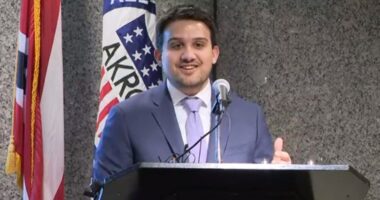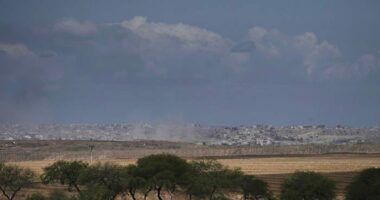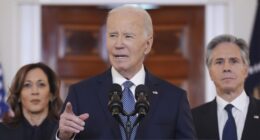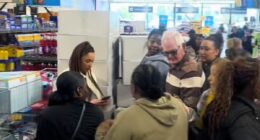
ORLANDO, Fla. – In a bustling classroom filled with the laughter and curiosity of preschoolers, something extraordinary happened.
These young children, some as young as three and four years old, began to learn the profound impact of kindness, sharing, and philanthropy. Guided by their passionate teachers, Ms. Miranda and Ms. Nancy, the lesson was more than just a story hour – it was a masterclass in compassion and community-building.
A lesson in kindness
The day’s activities centered around two central themes: understanding philanthropy and practicing politeness.
The teachers began by reading “Philanthropy with Grace and Charity,” a storybook that introduced the concept of giving back in simple, relatable terms. Grace and Charity, the book’s protagonists, modeled acts of kindness such as donating canned goods to local shelters, sending thank-you notes, and sharing toys with less fortunate children.
“Philanthropy is a big word, but we break it down for our students by showing how small actions, like saying please or donating gently used clothes-can make a big difference,” said Ms. Miranda. “It’s never too early to teach children the importance of helping others.”**
After the reading, the children eagerly raised their hands to share their ideas on how they could be kind and generous. Some suggested donating toys, while others talked about helping their parents at home by cleaning or setting the table.
”We can give food to people who are hungry,” said Emma, age 4, demonstrating a clear understanding of empathy.
Why start early? The benefits of teaching kindness to young children
Child development experts agree that teaching kindness and philanthropy at an early age can have lifelong benefits.
”When children learn the value of giving and helping others early, they develop emotional intelligence and a stronger sense of community,” said Dr. Anna Lopez, a child psychologist. ”These lessons shape their character and prepare them to become thoughtful, compassionate adults.”
The preschool years are a critical time for social-emotional learning. Young children are naturally empathetic, but they need guidance to channel those instincts into meaningful actions. Through structured lessons like this one, they learn that their actions have a tangible impact.
”When kids see that sharing a toy can make a friend happy, or that donating food can help a family in need, they understand that their choices matter,” explained Ms. Nancy. ”It’s empowering for them to know they can make a difference.”
Interactive learning in action
The lesson didn’t stop with storytelling. The children participated in hands-on activities, such as writing thank-you notes and brainstorming ways to help others. They practiced saying “please” and “thank you,” learned how to share toys with classmates, and even discussed how they could assist their parents at home.
”I help my mommy by cleaning the floor,” said Jace, age 5, beaming with pride.
The children were also reminded of a recent canned food drive held at the school. Many had contributed by bringing in non-perishable items, which were then donated to a local shelter. This real-world example of philanthropy reinforced the idea that giving back is not just an abstract concept-it’s something they can do every day.
Parents and community support
Parents have been enthusiastic about the initiative, praising the school for teaching their children these invaluable life lessons.
”It’s heartwarming to hear my child talk about kindness and helping others,” said one parent. ”These are values we try to teach at home, and it’s wonderful to see them reinforced at school.”
The lessons are also inspiring parents to participate in acts of kindness. Some have suggested organizing a family volunteer day, while others plan to donate toys and clothes during the holiday season.
The ripple effect of kindness
The impact of teaching kindness to young children extends far beyond the classroom. As they grow, these children carry these lessons with them, spreading compassion in their homes, schools, and communities. The ripple effect of these early lessons can lead to stronger, more connected communities and a more empathetic world.
“Kindness is contagious,” said Ms. Miranda. ”When children learn to be kind, they inspire others to do the same. That’s how we create a culture of caring.”
Looking to the future
This classroom lesson is just the beginning. The teachers plan to build on this foundation with future activities, such as organizing a toy drive, visiting a senior center, or creating thank-you cards for local first responders.
”We want our students to see that philanthropy isn’t just something you do once-it’s a way of life,” said Ms. Nancy.
As the lesson ended, the children reflected on their new understanding of kindness and philanthropy. They left with smiles, their hearts full of ideas for how they could make a difference.
”It feels good to help,” said Dominic, age 5. ”When I share my toys, my friends are happy. And that makes me happy, too.”
In a world often marked by challenges and division, this classroom stands as a beacon of hope, proving that the seeds of kindness planted in young hearts can grow into a better, brighter future for all.
Copyright 2024 by WKMG ClickOrlando – All rights reserved.
















